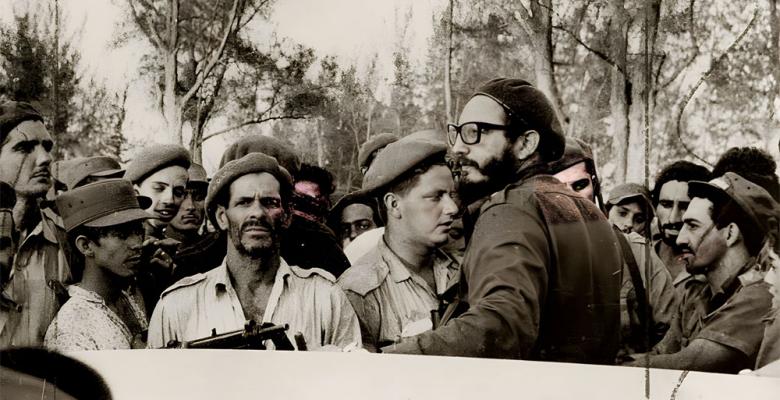
Havana, April 20. - After the beginning of the attack on the Bay of Pigs, less than 72 hours were enough for victory over the invading forces to be declared on April 19, 1961. One of the decisive factors in the triumph was the leadership assumed by the main leaders of the Revolution.
Two years had passed since the war against Fulgencio Batista had ended. Many of the officers of the Rebel Army, once insurrectional, held important political-military responsibilities within the Revolutionary Government in 1961. However, they did not choose the safety of their offices nor direct the counterattack from a distance, but rather were in advanced combat positions, not usual for leaders of their hierarchy.
For example, Efijenio Ameijeiras, chief of the National Revolutionary Police (PNR, for its acronym in Spanish), marched at the head of a battalion of this force to the combat zone in southern Matanzas. He was accompanied by Samuel Rodríguez, second chief of the PNR and also a veteran of the Sierra Maestra. The troop led by Efijenio Ameijeiras and Samuel Rodríguez was decisive for the victory, “it was the one that had the most casualties and the one that fought one of the bloodiest combats,” according to what Ameijeiras himself told the journalist Ciro Bianchi, in 1988.
Pedro Miret had been an attacker of the Moncada barracks and a prominent leader during the war against tyranny. During the confrontation with the mercenaries in April 1961, he led the revolutionary artillery. His role in command of these weapons became crucial in the defensive and then offensive strategy against what was called Brigade 2506.
Everything seems to indicate that it was the sense of duty that guided the initiative of several veterans of the Rebel Army to encounter the enemy, sometimes even without having received specific instructions. This was the case of Víctor Dreke, then a captain in the Armed Forces. He was with his driver when he heard news of the landing and decided to join the combats. On the way he encountered some militiamen, confronting some paratroopers who were trying to close a piece of road. After contacting the leadership of the newly founded Central Army, but not before, he received orders from Raúl Menéndez Tomassevich, one of the main officers in that General Staff, to remain in that position, at the head of the small troop. Dreke was wounded while riding in a jeep ahead of his group and the tanks that arrived later. This is part of the testimony recounted by the historic fighter to whom he writes.
When remembering the events that led to the victory at Playa Girón, the contributions of the then captain José Ramón Fernández, known by his contemporaries and in the history of Cuba as El Gallego Fernández, could not fail to be mentioned. He was a career military man and was imprisoned for conspiring against Batista. When the counterrevolutionary brigade landed at the Bay of Pigs, this officer of the Cuban Armed Forces served as director of the school for militia leaders in Matanzas. Leading his subordinates and apprentices, he was one of the first to clash with the invaders. The troops under the orders of El Gallego Fernández played a vital role in the early containment of Brigade 2506. Once the enemy advance was paralyzed, the soldier of Iberian origin appeared as a main strategist of the Cuban offensive.
And although he was not the only relevant leader who put himself in the lines of fire, the figure of Fidel Castro in the war tank in the sands of Girón has transcended as one of the main symbols of the revolutionary epic of those days. Officially, he held the title of prime minister; but he did not limit himself to issuing orders and receiving war reports from some office or remote command post while the rest of the military waged battle.
According to a biography written by researcher Katiuska Blanco, after receiving information about the landing in the Bay of Pigs and giving his first instructions from Havana, the Commander in Chief marched with a column, on April 17, to the war front. It passed through the city of Matanzas and successively traveled through Limonar, Coliseo, Jovellanos, Jagüey Grande, until arriving, in the afternoon of that same day, at the Australia sugar mill, an obligatory passage from Jagüey Grande to Girón. It only ceased its military activities when the invasion was crushed.
Thus, the nationalist victory at the Bay of Pigs was due, among other factors, to the conviction with which peasants, youth, militiamen, police officers, and members of the Rebel Army took their place in the conflict and to the live example of those who had made the Revolution triumph and were now defending it on the front lines. (Text: Ariel Pazos/Cubasí) (Photo: Cubasí)